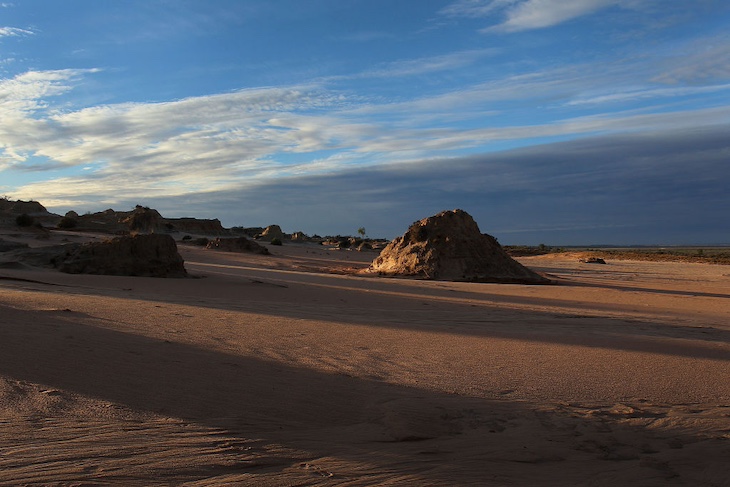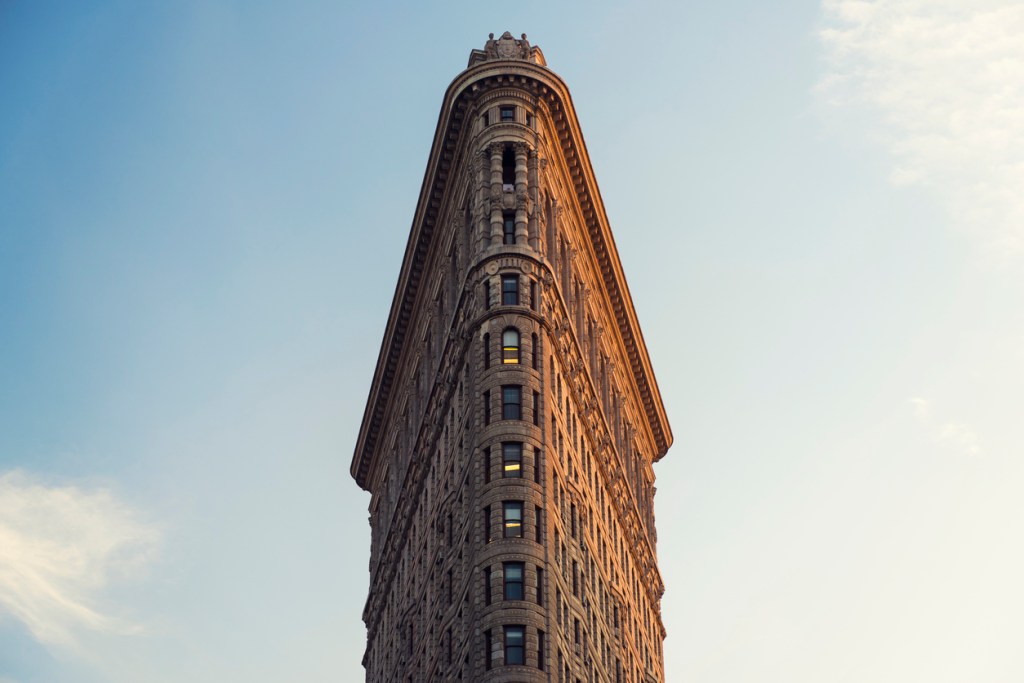As I write, hundreds of ancient human remains are secretly being buried in a remote desert 1,000km from Sydney (New South Wales national parks service recommends you take extra supplies, fuel and car parts). No one knows who the people were, how, or when they died. But the reburial has stirred deep emotions, with a dividing line drawn between objective science and subjective belief. This is not just an Australian issue. It is about reconciling global history, and understanding ourselves as a species.
The story of these remains begins half a century ago when Jim Bowler, a geologist, was studying a necklace of kidney-bean shaped lakes strung out along a creek. The lakes have long been dry, but in the distant past they were wildlife havens – and therefore attractive to passing humans. At one of them, Lake Mungo, Bowler noticed burnt bones in a fringing sand dune. Archaeologists established that it was a cremated woman. Remarkably, a few years later he found another burial nearby, this time the complete skeleton of a man. Mungo Lady and Mungo Man, as they became known, were the oldest known Australians ever discovered. The news was sensational.
The discovery also has profound implications for piecing together the history of the human race. Both burials are 40,000 years old. We know that Homo sapiens, on current evidence, first reached Asia from Africa 70,000 years ago. There is no indication yet of any earlier human species living in Australia. But there are growing signs of an unexpected diversity in our genetic heritage.
The data comes mostly from DNA. This has established the existence of a species named Denisovans. Contemporaries and close relatives of Neanderthals in Europe and western Asia, they lived over a wide range of habitats from Siberia and Tibet to China. When modern humans entered Neanderthal and Denisovan territories, they interbred. That left a simple trace of Neanderthal DNA in the west, but in the east the Denisovan legacy is stronger – up to 5 per cent of our genome – and more varied, with at least three different populations showing up in DNA today. It’s possible that modern people are variously benefitting from Denisovan adaptations to, for example, high altitude or extreme cold.
Did the Denisovans reach Australia? What Denisovan traits did the first modern humans bring with them to the continent? Fossils are key to answering such questions – if they can be identified. Which is one reason why archaeologists are so keen to study the Mungo remains.
Mungo Lady and Mungo Man were not the only fossils found in New South Wales. In total, over 100 individuals have been discovered in the area. Other finds include hundreds of footprints left 20,000 years ago by people moving across the lake edge. It has been estimated that one man was running 20 kilometres an hour – a competitive pace for a modern runner. The tracks have been carefully preserved. But the reburial of the 100 human remains will have the opposite effect. They will disappear when they are buried this week in the desert. For scientists, the remains were a unique window into human evolution and ancient behaviour. That has now been lost.
Why then have they been reburied? Aboriginal Australians who live in the region have their own creation stories – they believe their people have been in Australia forever. For many that means a rejection of the Out of Africa theory of human migration. They also feel strongly that the Mungo people should never have been dug up in the first place.
In 2018 the NSW government, supported by a local Aboriginal advisory group, agreed to the reburial of all the remains. But there was dissent in the wider Barkandji, Mutthi Mutthi and Ngiyampaa communities. Some wanted a ‘keeping place’, a special building where remains could be curated under their own supervision, and occasionally made available, by them, to researchers. That project was abandoned for lack of funding, and doubts about what Unesco might approve.
Mungo Man and Mungo Lady were buried in 2022. Jason Kelly, a Mutthi Mutthi member of the First Peoples’ Assembly of Victoria, accused the government of ‘a criminal act against Indigenous people’. Now Kelly is asking the Federal Court to intervene, but it seems the best he can hope for is that burial locations are made public.
This was not just about Lake Mungo or the wider Willandra Lakes region, now a Unesco World Heritage Area. Collecting and removing human remains has a long, dark history around the world. Notably following the publication of Darwin’s ideas about evolution, the skulls of modern people became highly sought after by universities and museums in Europe and North America. Graves were plundered from Easter Island to India. In Australia, collecting was inspired by the colonial fantasy of terra nullius, that the continent was empty before Europeans arrived. Aboriginal people were treated like fauna. Collectors would wait for known individuals to die, or pick over bodies they had shot. Museums now struggle with this legacy. Sometimes they return remains – if related people can be identified, which is not always possible. For Aboriginal Australians, even now striving for full recognition as citizens, the Mungo finds were much more than scientific specimens.
Reburial of excavated remains is no longer exceptional, though often controversial. But this case is unique for the great age, and potential significance of the ancient people. Few are happy about the week’s events. Behind the headlines, museums, scientists and Indigenous peoples will perhaps be wishing things had turned out differently. Perhaps the Lake Mungo saga will make people pause and listen. For only with mutual understanding and respect will we be able to move on and ask, with wonder, who we all really are?







Comments